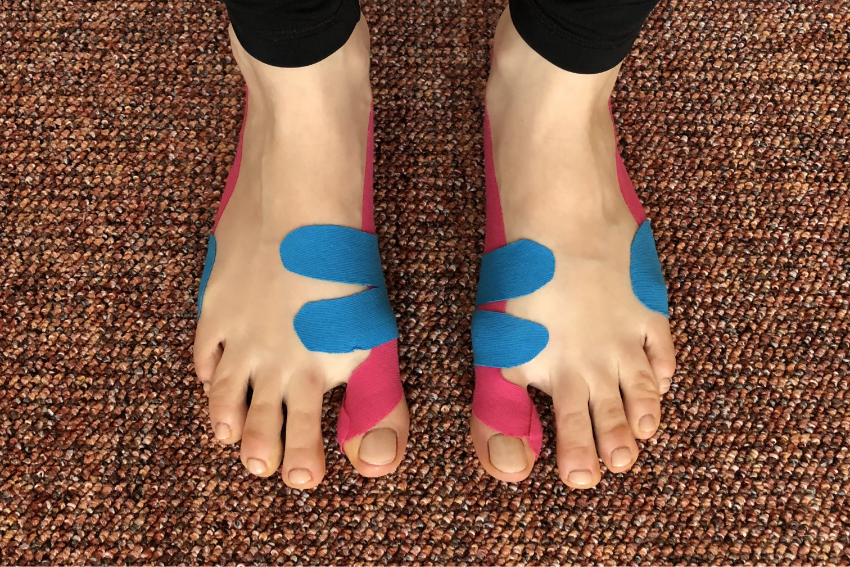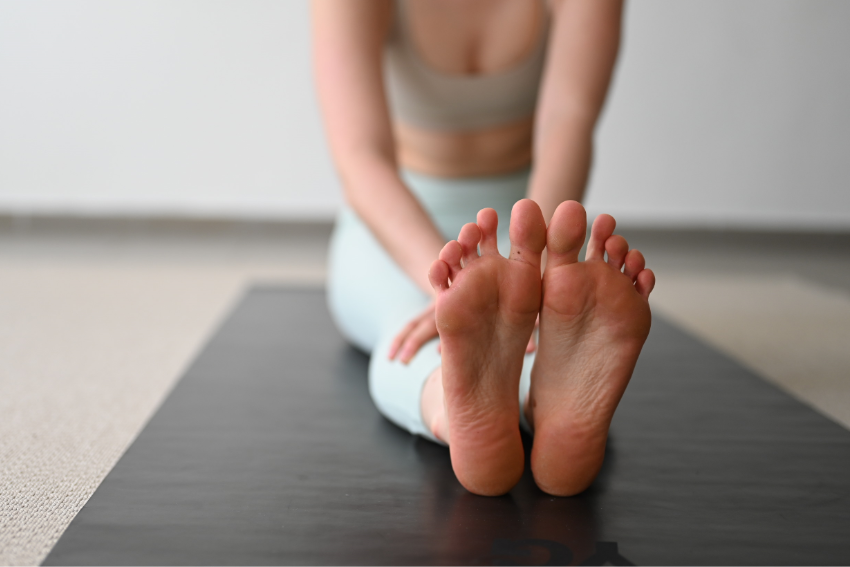About feet and walking with Veronika Jančářová
Dear barefoot enthusiasts we are happy to welcome you on our new blog. On this blog we focus on stretching and strengthening the feet or choosing the right type of footwear. You will also find here other interesting topics and interviews with specialists. Our first guest is Veronika Kucerova, a physiotherapy student at Masaryk University in Brno.
Why did you decide to study physiotherapy?
When I was applying to university I knew I wanted to be in a medical field. At first I couldn’t decide which specialization to choose, but as I had visited a physiotherapist myself while I was in primary and high school, I thought I could try that. I was accepted to college and three years later I’m happy for my decision.
What is your field of interest in physiotherapy?
I‘m currently interested in working with babies and young children, but also in gynecologic physiotherapy where we deal with conception problems, pregnancy and after birth care or we work with elderly women. I also like working with patients that are recovering from an injury. We help them to get back to normal life.
Do you mind if we talk more about feet?
Not at all. It is important to mention that our bodies work as one unit. For example if you have a problem with your back it may be directly related to your feet. Everything in the body is connected.
Do you mind if we talk more about feet?
Not at all. It is important to mention that our bodies work as one unit. For example if you have a problem with your back it may be directly related to your feet. Everything in the body is connected.
Why should people be interested in the condition of their feet?
Simply because our feet carry us our whole lives and are in contact with the ground. A foot and a leg placement affects the posture which means that any problems with your feet can project to other parts of the body through the muscle chains. At the same time the feet are important for their sense of touch as they tell us what is on the ground.
What impact do healthy feet have on the physique?
The feet allow us to stand, walk and run. Imagine having a pebble in your shoe while walking. Your gait changes completely. You start to limp and your posture can become stooped. That applies the other way around. For example if your pelvis is in a wrong position you move your feet differently. Your feet should be strong and flexible. When you put on hiking boots the muscle function declines and your feet are not as strong and flexible as they are while walking barefoot. This can lead to muscle stiffness or loosened joints which bring additional problems. The feet are an active organ which should be strenghtened regularly to be fully functional.
What moves should healthy feet be able to perform?
You should be able to move your big toe separately from your other toes and vice versa. Try it while your foot is placed on the floor, first the big toe then the rest of the toes.
How long does it take to adjust the feet to barefoot shoes?
Between months and years. Just recently one of my teachers presented a study which shows the period of adjusting to barefoot shoes takes from six months up to two years.

Do you wear barefoot footwear?
Yes, I consider myself a barefoot fan and I recommend wearing them to almost everybody
What are the benefits of wearing barefoot shoes?
Barefoot shoes mimmic an actual barefoot walking. It is an interstage between walking with your bare feet and walking in conventional footwear. The main benefit is that there is enough room for your toes which facilitates the bloodflow. You can also bounce better thanks to the shoes‘ flexibility.
JAre the barefoot shoes suitable for walking on a hard surface?
Walking on hard surfaces such as tar or concrete is not good in general because you overload your joints and spine. On the other hand if I imagine wearing sandals with thin sole and narrow toebox I would rather wear barefoot shoes. Their sole may be just as thin, but there is at least enough room for the toes. When walking on a hard surface you engage the same muscle groups all the time which leads to a overload and a lack of function. That is why it is important to switch surfaces every now and then, but it is very individual. In my opinion everyone who wears barefoot shoes should be aware of their whole body and keep watching whether there is any pain after a long walk on a hard surface. That would be for example leg, hip or back pain. If there is any pain present you should decide whether you will continue wearing barefoot footwear or whether you switch to a different kind of footwear. Preferably shoes with thicker soles that do not misshape your feet.
If I don’t want to buy barefoot shoes straight away, which ones should I opt for?
For me the main aspect is the enough room for the toes. The shoes should also be light and flexible. I think the worst type of footwear is the one with a platform. Such shoes are fashionable, but when I see them on a display my feet are hurting without even trying them on.
Is barefoot footwear suitable for everyone?
I wouldn’t recommend barefoot footwear to everyone. We need to respect our type of gait and the needs our feet have. We have to also keep in mind some people have inborn defects, but those are not that common.
What happens with child’s feet if they wear small shoe size just to „wear them out because they were expensive“?
Imagine you trap your feet into a small cage. The child will not walk correctly because their feet cannot move properly. This effects the pelvis and spine positions along with the whole psychomotor development. The child develops problems in the future. As I said, everything in the body is connected.
What kinds of deformities are most common among people?
These deformities are in general developped over time. Inborn malfunctions are not that common. The deformities we often see are big toes being bent towards the other toes (hallux valgus), ankle valgus and flat foot. They often occur together.

How can we treat a hallux?
I would start by visiting a physiotherapist. It depends on which state the foot is in. If the hallux is in an early stage of development it can be treated completely with exercising. If the hallux is already in an advanced stage the exercising will help to change the shape of your foot, but the deformities will still be visible.
What about a surgery?
A surgery can only alter the big toe’s position. When the hallux is advanced there is a big chance the problems are also in the ankle joint and foot’s arches which need to be loosened up. A proper rehabilitation is necessary after a surgery which can be more difficult than without a surgery. It is a long journey, you wear a cast and you have to walk on crutches for a long time. The rehabilitation after a surgery is crucial.
And what about a bandage or rubber toe spacers which we can buy to heal the hallux?
It‘s a pasive support and it‘s basically the same thing as when a person with fallen arches wears an orthopedic insoles. I would say that the most important thing is exercising because the passive support cannot eliminate these problems on its own. Exercising is important.
So orthopedic insoles are not the right method to treat fallen arches?
I don’t say that. When the patient experiences a lot of pain it‘s better to relieve the pain with orthopedic insoles. But they don’t solve the problem. In this case I mean inborn deformities which cannot get by without any orthotics. Exercising is still the foundation of healthy feet.
What is an ankle valgus and how can it be treated?
It means the ankle leans inward. It‘s caused by weakened muscles and ligaments, but it has a close relation to hallux where the foot looses its stability. Regarding the treatment exercising is the best option.
What about the treatment of the fallen arches during the pregnancy?
I would recommend visiting a physiotherapist and again exercising which is crucial. In my opinion the best treatment is prevention. That may be for example buying a bigger shoe size so the feet are not tied down..
What types of exercises are best for fallen arches?
Walking barefoot so the feet have as many stimuli as possible. Massaging your feet either with your fingers or with massage balls is great for you. As for the exercises it can be the movement of the toes for example spreading them, lifting only the big toe leaving the other toes on the ground and vice versa. You can try picking up objects from the ground with your feet. The Nallu acupressure board is also a great tool which can replace the massage balls. It is not just about exercising alone. The ability of placing your feet correctly while walking is very important and the physiotherapist can help you with that. It means your feet are supported only in three points – heel, big toe and little toe. This position activates the arches.


